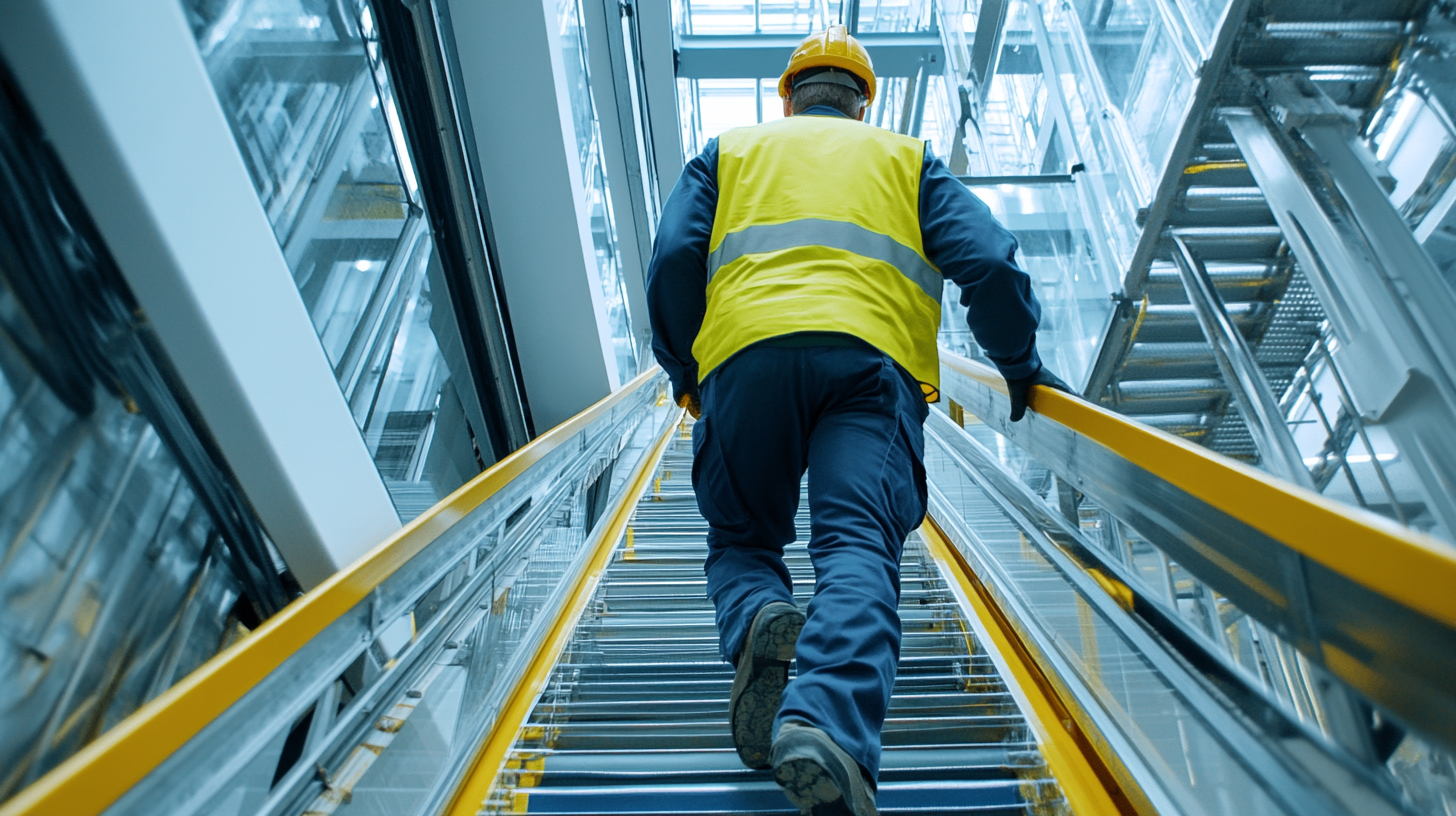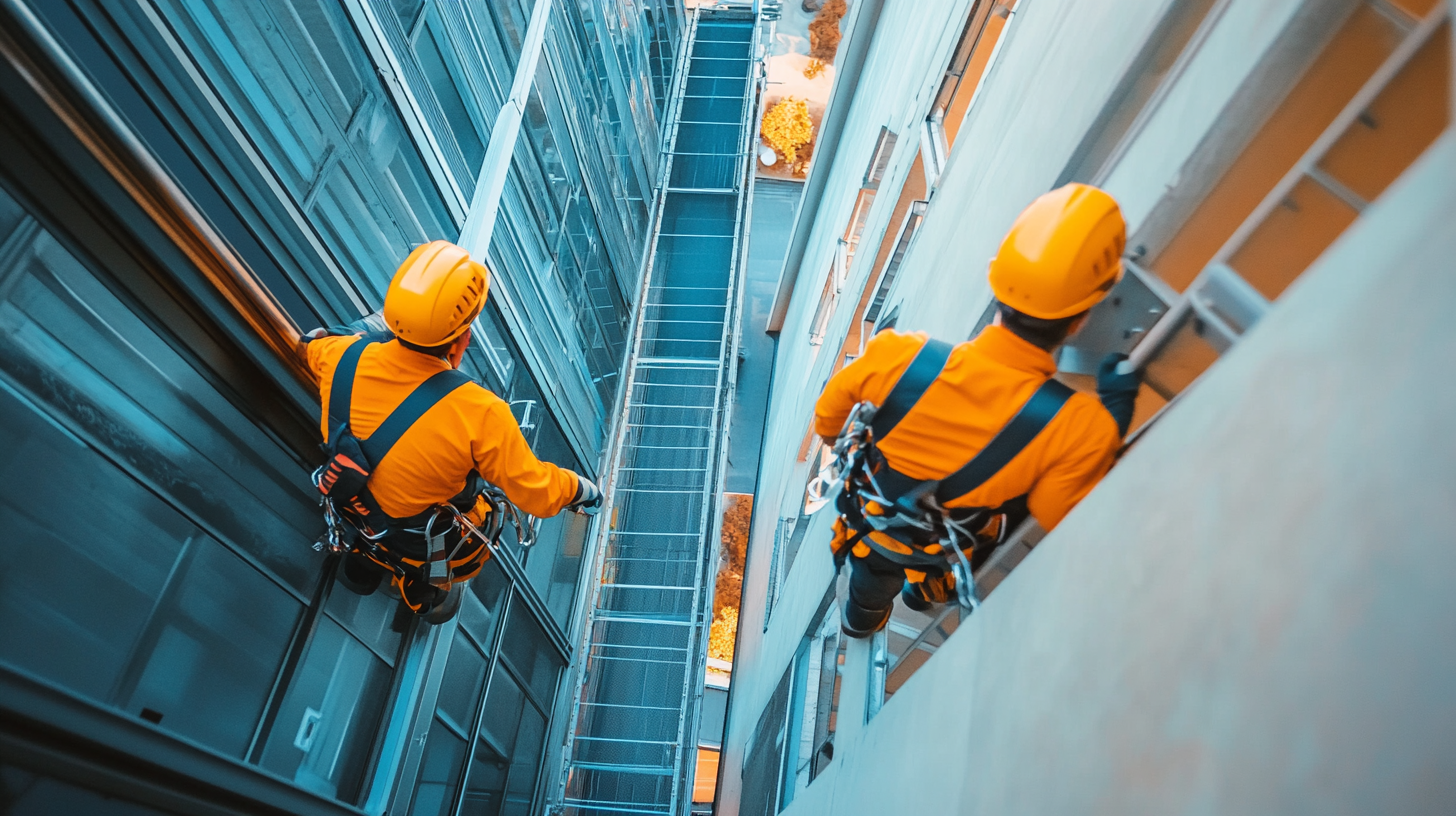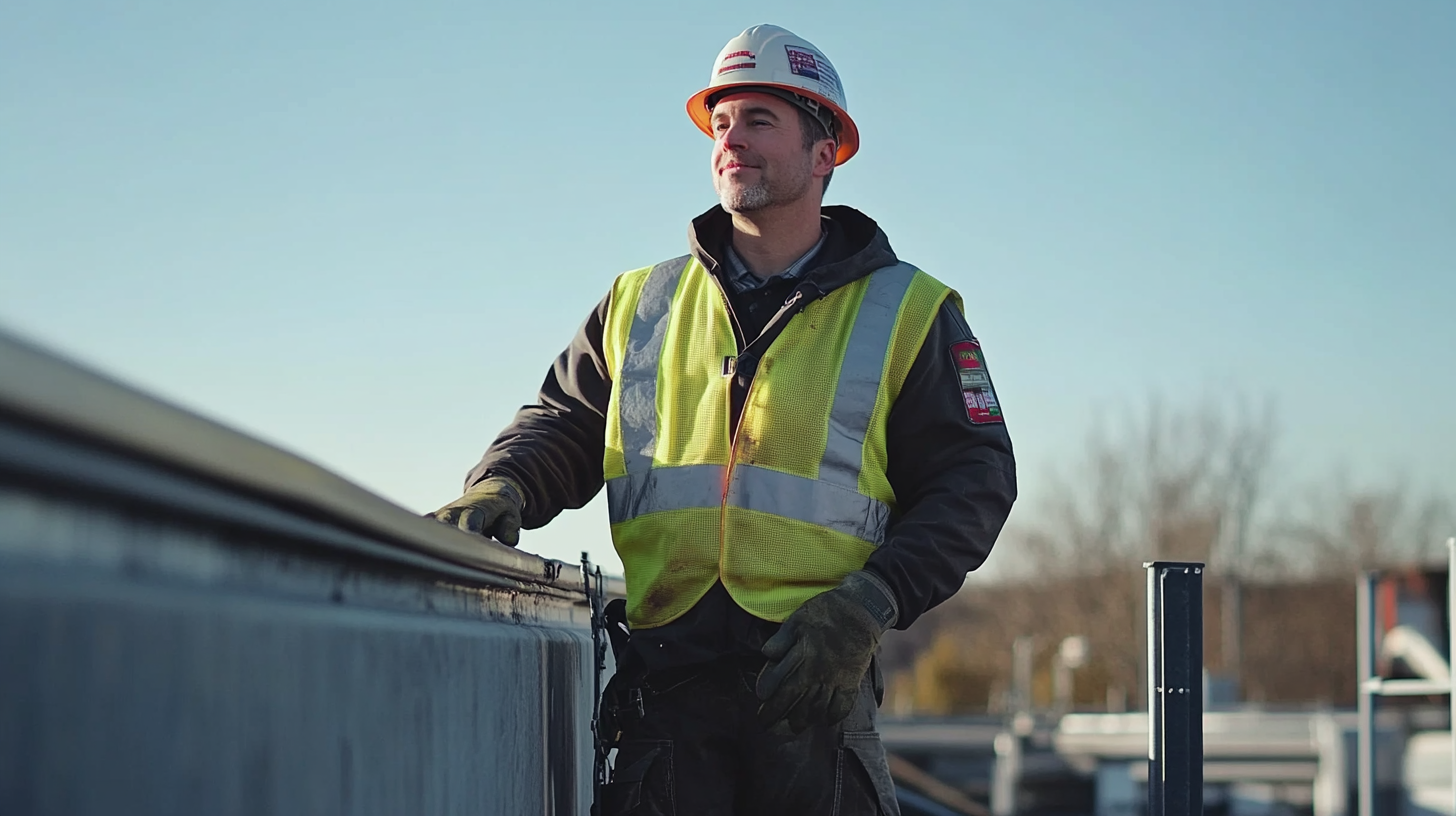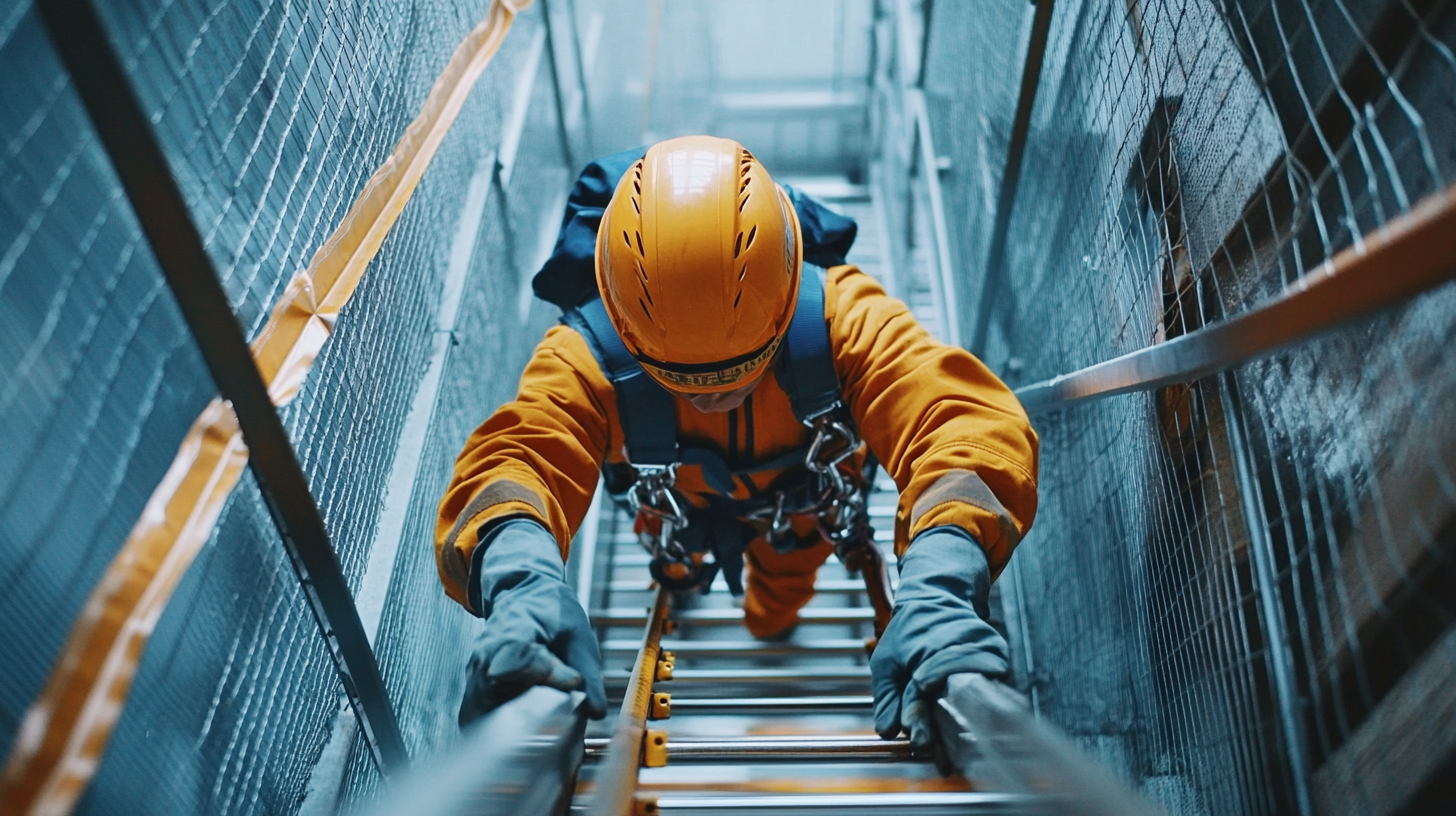Enhancing Safety Through Fall Prevention: Cost-Effective Maintenance Solutions and Real-World Success Stories
In the realm of workplace safety, fall prevention has emerged as a critical focus, underscored by alarming statistics. According to the National Safety Council, falls account for nearly 30% of all workplace injury claims, making them one of the leading causes of serious work-related injuries and fatalities. Furthermore, the Occupational Safety and Health Administration (OSHA) reports that falls are responsible for around 1,000 worker deaths each year in the United States alone, emphasizing the urgent need for effective strategies to mitigate these risks. The financial implications are equally staggering; the cost of fall-related injuries is estimated to exceed $70 billion annually across various sectors, highlighting the imperative for businesses to invest in cost-effective maintenance solutions aimed at enhancing safety through fall prevention.
As organizations strive to create safer environments, adopting comprehensive fall prevention strategies not only protects employees but also contributes to significant economic benefits. Successful case studies reveal that businesses implementing proactive maintenance and safety protocols have seen reductions in fall-related incidents and associated costs. By prioritizing fall prevention, companies can cultivate a culture of safety, driving both employee morale and productivity while simultaneously mitigating financial risks. In this blog, we will explore practical maintenance solutions that enhance safety and review real-world success stories that illustrate the positive impact of prioritizing fall prevention in the workplace.

Understanding the Importance of Fall Prevention in Safety Programs
Falls are a leading cause of injuries in various environments, particularly in workplaces and public spaces. Understanding the importance of fall prevention in safety programs is crucial for fostering a culture of safety and well-being. Implementing effective fall prevention strategies not only protects individuals but also significantly reduces costs related to workplace injuries, insurance claims, and potential litigation. Safety programs that prioritize fall prevention showcase a proactive approach, ensuring that all team members are trained and aware of the risks associated with slips, trips, and falls. A robust fall prevention strategy involves not only the implementation of physical measures like guardrails and non-slip surfaces but also the establishment of regular maintenance protocols. Regular inspections and quick resolutions of potential hazards can prevent falls before they occur. Engaging employees in safety training programs enhances their awareness and reinforces a collective responsibility toward maintaining a safe environment. Real-world success stories of organizations that have prioritized fall prevention demonstrate the tangible benefits of these approaches, including improved employee morale and reduced accident rates. Moreover, integrating technology into safety programs can streamline fall risk assessments and monitoring. Wearable devices and smart sensors can provide real-time data on potential hazards, enabling timely interventions. By investing in such cost-effective maintenance solutions, organizations can create a safer workplace that not only complies with regulations but also fosters a culture committed to the well-being of all individuals. The importance of fall prevention in safety programs cannot be overstated; it is an essential component that protects lives and supports a productive and thriving environment.

Cost-Effective Maintenance Strategies for Reducing Fall Risks
In today's fast-paced world, ensuring safety in various environments is paramount, particularly when it comes to preventing falls. Effective maintenance strategies can significantly reduce fall risks while being cost-effective. One of the primary approaches involves regular inspections and proactive maintenance of flooring and walking surfaces. Identifying and addressing issues such as loose floor tiles, uneven surfaces, or inadequate lighting can prevent accidents before they occur.
Another key strategy is the implementation of clearly marked pathways and handrails. By ensuring that walkways are distinctively marked and providing sturdy handrails in areas where falls are more likely, facilities can enhance safety measures. Informative signage can also play a critical role in reminding individuals to stay mindful while navigating different spaces, thus reducing the likelihood of falls.
Furthermore, creating a culture of safety through employee training and awareness programs can foster vigilance among staff and patrons alike. Regular training sessions that focus on fall prevention tactics can empower individuals to take an active role in maintaining their surroundings. Sharing real-world success stories from organizations that have effectively implemented these strategies can inspire others to adopt similar practices, further enhancing the overall commitment to safety in various environments.

Real-World Success Stories: Fall Prevention in Action
In recent times, the importance of fall prevention has gained heightened attention, showcasing successful initiatives across communities. The recent Healthy Living Awards highlighted the remarkable achievements of fall prevention programs, particularly emphasizing the collaborative efforts of Tai-chi instructors and students in the High Country. This awards ceremony was not just a celebration of individual accomplishments but also a testament to the effectiveness of community-driven initiatives aimed at enhancing safety and reducing fall incidents among vulnerable populations, especially seniors.
The impact of such programs goes beyond recognition; they are tangible examples of real-world success stories in action. As participants engage in Tai-chi, they not only improve their physical balance and strength but also cultivate a sense of community and support. These programs often incorporate education on fall prevention strategies and emphasize the importance of regular physical activity. The positive outcomes seen in the High Country serve as an inspiring model for other regions aiming to implement similar strategies, demonstrating that a focus on prevention can lead to substantial improvements in public health and well-being.
Moreover, the efforts seen in fall prevention align with broader health trends, such as the emphasis on prevention and screening that has been linked to declines in cancer-related deaths. Just like proactive measures in healthcare can save lives, investing in fall prevention solutions not only protects individuals but also alleviates healthcare burdens. As communities continue to share and celebrate these success stories, there lies a powerful opportunity to inspire action and prioritize safety in our environments.

Implementing a Comprehensive Fall Prevention Plan
Implementing a comprehensive fall prevention plan is crucial for enhancing safety in various environments, from workplaces to public spaces. The first step in such a plan involves conducting a thorough risk assessment to identify potential hazards that could lead to falls. This assessment should encompass areas with high foot traffic, irregular surfaces, and poorly lit spaces. By pinpointing these risks, organizations can prioritize areas that require immediate attention and develop targeted strategies to mitigate these dangers.
Once hazards are identified, it is essential to employ cost-effective maintenance solutions that ensure continuous safety. Regular upkeep of flooring, proper lighting installation, and clear signage can significantly reduce the likelihood of accidents. Additionally, routine training programs for staff on safe practices and emergency procedures can foster a culture of safety and awareness. Engaging employees in these initiatives not only enhances their wellbeing but also empowers them to take proactive steps in preventing falls.
Real-world success stories illustrate the tangible benefits of implementing a fall prevention plan. Facilities that have adopted comprehensive strategies have reported significant reductions in fall-related incidents and associated costs. These organizations demonstrate that safety does not have to come at a high price; rather, with thoughtful planning and maintenance, it is possible to protect individuals while simultaneously enhancing overall operational efficiency. By prioritizing a fall prevention strategy, organizations not only safeguard their personnel but also create an environment where safety is everyone's responsibility.
Measuring Effectiveness: Assessing Safety Improvements Post-Intervention
Assessing safety improvements after implementing fall prevention interventions is crucial for understanding their effectiveness. Organizations must develop a methodical approach to measure safety enhancements in their facilities. By using a combination of quantitative and qualitative assessments, they can gather data on incident rates, worker feedback, and observations of behavior changes. This multifaceted approach enables managers to create a comprehensive picture of the impact that maintenance solutions have on fall incidents.
One effective method of measurement is the application of key performance indicators (KPIs) related to safety. Metrics such as the reduction in slip-and-fall accidents, the frequency of safety inspections, and employee training completion rates can provide concrete evidence of progress. Additionally, gathering testimonials and experiences from employees can highlight qualitative improvements that numbers alone may not capture. These firsthand accounts can inform future strategies and adjustments, ensuring a continuous improvement loop that prioritizes safety.
Moreover, real-world success stories serve as a powerful tool in illustrating the effectiveness of these interventions. Sharing case studies from organizations that have successfully reduced fall incidents through targeted maintenance strategies not only motivates other businesses but also provides practical examples of what works. Highlighting these successes creates a culture of safety and accountability, encouraging other organizations to follow suit and invest in preventative measures that yield tangible results in the workplace.
